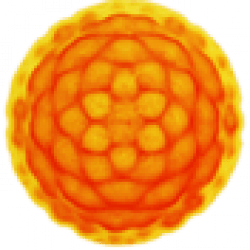 Phase-change heat transfer processes such as boiling and condensation are common in high-heat flux applications, such as cooling high-density electronics and industrial power cycles. Optimization of the phase change heat transfer processes requires a careful balance between boiling and condensation to ensure low surface superheats, high critical heat flux (CHF) limits, and adequate system stability. Recent experiments demonstrate that multi-scale acoustic actuation at atmospheric pressures can lead to control of the rate of vapor formation on and transport from the heated surfaces (along with a substantial extension of the critical heat flux limit), and simultaneously accelerate vapor condensation within the bulk liquid. Ultrasonic actuation on the heater surface enhances vapor advection and thus increases the CHF, while sonic actuation in the bulk liquid accelerates the vapor condensation rate by forming surface capillary waves at the vapor-liquid interface. Furthermore, the actuation may be coupled with structured surfaces, which provide passive enhancement along with the active acoustic enhancement. Critical heat fluxes up to 460 W/cm2 were observed on a microchannel surface with ultrasound actuation, as compared to 110 W/cm2 on a smooth, unactuated boiling surface. Reductions in vapor interface area of 50% were observed above a smooth surface using capillary-wave-forming, kHz-frequency actuation. The video below shows the onset of 1 kHz actuation when the heater is dissipating 100 W/cm2; the yellow color has been added to aid identification of actuation onset. Note the presence of the surface waves on the interface (made visible by high-speed photography at 10,000 fps) and the drastic reduction in vapor volume.
Phase-change heat transfer processes such as boiling and condensation are common in high-heat flux applications, such as cooling high-density electronics and industrial power cycles. Optimization of the phase change heat transfer processes requires a careful balance between boiling and condensation to ensure low surface superheats, high critical heat flux (CHF) limits, and adequate system stability. Recent experiments demonstrate that multi-scale acoustic actuation at atmospheric pressures can lead to control of the rate of vapor formation on and transport from the heated surfaces (along with a substantial extension of the critical heat flux limit), and simultaneously accelerate vapor condensation within the bulk liquid. Ultrasonic actuation on the heater surface enhances vapor advection and thus increases the CHF, while sonic actuation in the bulk liquid accelerates the vapor condensation rate by forming surface capillary waves at the vapor-liquid interface. Furthermore, the actuation may be coupled with structured surfaces, which provide passive enhancement along with the active acoustic enhancement. Critical heat fluxes up to 460 W/cm2 were observed on a microchannel surface with ultrasound actuation, as compared to 110 W/cm2 on a smooth, unactuated boiling surface. Reductions in vapor interface area of 50% were observed above a smooth surface using capillary-wave-forming, kHz-frequency actuation. The video below shows the onset of 1 kHz actuation when the heater is dissipating 100 W/cm2; the yellow color has been added to aid identification of actuation onset. Note the presence of the surface waves on the interface (made visible by high-speed photography at 10,000 fps) and the drastic reduction in vapor volume.
